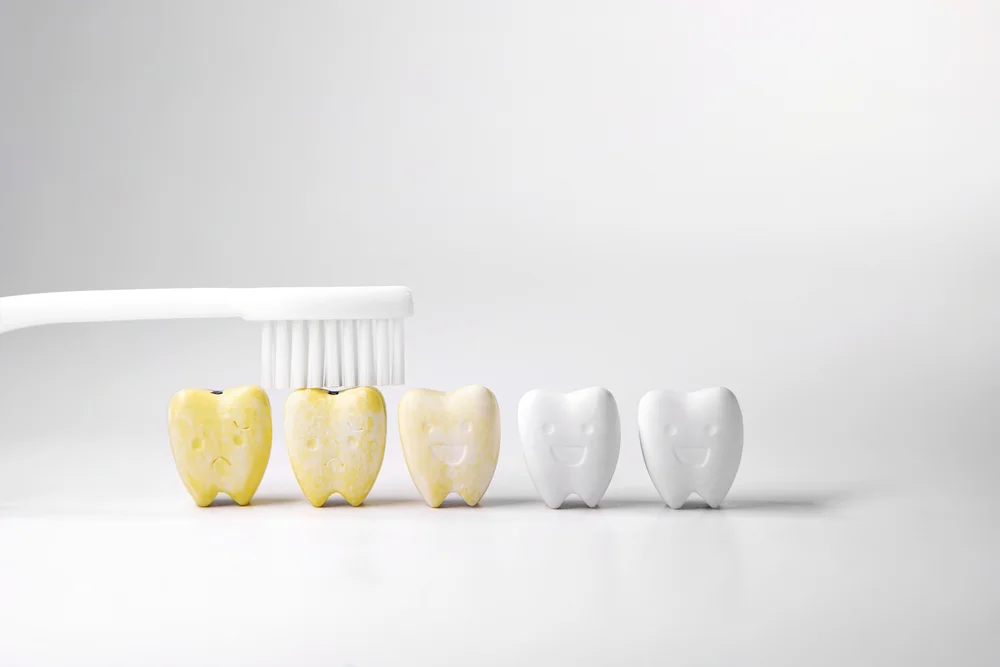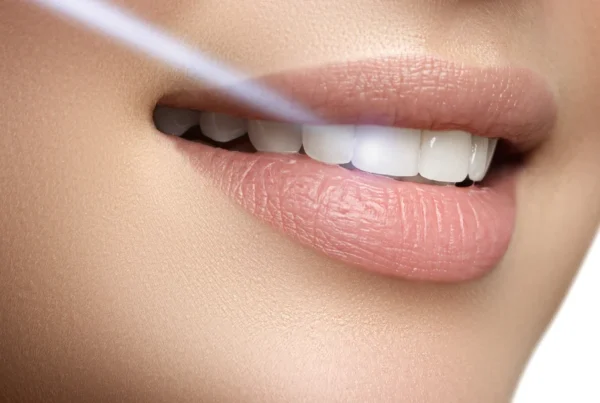Whitening toothpaste, often seen as just a beauty product, actually plays a critical role in our daily dental health regimen. Its main job isn’t just to brighten our teeth but also to support our overall oral hygiene. This article clarifies the genuine benefits of whitening toothpaste and provides guidance on how to effectively incorporate it into your daily dental care routine, highlighting its importance for both your smile’s appearance and the health of your mouth.
Whitening toothpaste primarily removes surface stains from teeth, contributing to a brighter smile. It contains ingredients that aid in overall dental hygiene, such as reducing plaque and strengthening enamel. The right use of whitening toothpaste complements other dental health practices to create a comprehensive oral care plan.
By understanding these aspects, whitening toothpaste can be recognized for its true value in dental care, not just for its aesthetic results.
Understanding the Benefits Beyond Cosmetics
Whitening toothpaste offers several benefits that go beyond just making your teeth look good. It supports oral hygiene and fights against plaque, but its benefits are often overshadowed by the perception that it’s purely cosmetic.
Using whitening toothpaste correctly means taking advantage of ingredients designed to improve both the appearance and health of your teeth.
- Mild abrasives in the toothpaste gently polish teeth and remove stains, safeguarding the enamel if used correctly.
- The presence of fluoride and other ingredients contributes to plaque control and strengthens tooth enamel.
These benefits underscore the importance of correct usage and the broader impact whitening toothpaste has on dental health. Patients educated on these benefits can obtain a more complete oral care routine and let go of the misconception that whitening toothpaste is just for looks.
Safety, Sensitivity, and Enamel Erosion
Using whitening toothpaste is not without risks, and it’s essential to understand how to minimize potential harm such as enamel erosion and increased tooth sensitivity.
Patients can avoid complications by selecting products wisely and using them as recommended by dental professionals.
- Overusing or misapplying whitening toothpaste with harsh abrasives can wear away the protective enamel.
- Some users might experience tooth sensitivity, particularly when enamel is compromised.
- Choosing products with enamel-strengthening ingredients and following ADA recommendations can prevent these risks.
By identifying products that carry the ADA Seal of Acceptance, consumers can trust in their safety and effectiveness, reducing the hazards associated with enamel erosion and sensitivity.
Comparing Whitening Toothpaste with Other Methods
Whitening toothpaste should be accurately positioned within the array of available teeth whitening options. It’s vital to manage expectations about what whitening toothpaste can achieve compared to professional treatments.
Understanding the role of whitening toothpaste in the larger context of whitening treatments helps patients make more informed decisions.
- Professional whitening solutions offer immediate results due to higher concentrations of bleaching agents.
- Whitening toothpaste is designed for gradual stain removal and long-term oral health maintenance.
Realizing the distinctions between these methodologies aids in informed decision-making for patients seeking teeth whitening. By setting realistic expectations, patients can appreciate whitening toothpaste as a maintenance tool rather than a quick-fix solution for significant discoloration.
Actionable Response or Strategic Solution
Optimizing the benefits of whitening toothpaste involves a conscious and recommended practice of daily dental care tailored to individual needs.
With the right approach, whitening toothpaste can fit seamlessly into a comprehensive oral care plan.
- Brushing twice daily with whitening toothpaste approved by dental professionals can maximize stain removal.
- Supplementing this routine with complementary oral hygiene products enhances the overall teeth-whitening effect.
- Consultations with dental professionals can tailor regimens to patients with specific circumstances, such as tooth sensitivity.
This strategic approach ensures that patients benefit from customized dental care plans that incorporate whitening toothpaste effectively.

Decision Criteria or Escalation Triggers
When deciding on whether to use whitening toothpaste, there are several factors to consider. Also, knowing when to seek professional advice is key if complications arise.
Patients should be alert to warning signs that suggest a need for more advanced dental care.
- The ADA Seal, personal sensitivity, and individual oral health needs guide the selection process for consumers.
- Experiencing increased sensitivity or erosion, or not getting the desired results, should prompt a discussion with a dentist.
- Professional dental advice can then provide alternate or additional treatments to address these concerns.
Ability to recognize these escalation triggers ensures timely interventions, facilitating optimal oral health management.
Support Resources or Professional Guidance
The role of dental professionals in educating and guiding patients on the use of whitening toothpaste is fundamental.
With the right guidance, patients can make confident choices and avoid common pitfalls.
- Accurate information on product selection and proper brushing techniques can be invaluable.
- Personalized consultations address individual concerns like sensitivity and provide tailored support.
- Using evidence-based recommendations from dental studies and association endorsements reinforces the credibility of guidance given.
Dentists are crucial in providing the support needed for patients to use whitening toothpaste responsibly and effectively.
Preventive Measures or Best Practices
To maintain white teeth and minimize risks, several preventive measures and practices should be employed.
Consistent application of best practices helps extend the benefits of whitening toothpaste and supports long-term oral health.
- Favoring toothpaste with gentle abrasives protects enamel while effectively removing stains.
- Employing proper brushing techniques and avoiding over-brushing prevent enamel damage.
- Regular dental check-ups and a balanced diet contribute to long-term oral health and stain prevention.
Adopting these best practices promotes a healthy, white smile and ensures a well-rounded approach to oral care.
Take Action for Whiter Teeth
In summary, whitening toothpaste is not just a vanity product, it is a critical element of routine oral care with numerous health benefits.
By using whitening toothpaste effectively, patients can elevate their dental routine and experience lasting benefits.
- Its correct usage fosters not only a brighter smile but also contributes to preventing cavities and supporting gum health.
- Effective education on the use and benefits of whitening toothpaste is essential for comprehensive dental health.
- A collaborative approach between patients and dental professionals can lead to optimal oral health outcomes and a sustained bright smile.
By appreciating its full value, whitening toothpaste can be properly integrated into daily dental care, enhancing both the beauty and health of your smile.
Frequently Asked Questions
Is whitening toothpaste safe for my enamel?
Whitening toothpaste is generally safe for your enamel when used correctly and in moderation. The key is to choose a product that contains gentle abrasives and has been approved by dental professionals. One easy way to ensure this is by looking for the ADA Seal of Acceptance on the packaging, which signals that the product is both effective and safe for everyday use. By sticking with reputable brands and following the directions, you can safely incorporate whitening toothpaste into your daily routine without risking enamel erosion.
Can whitening toothpaste replace professional treatments?
Whitening toothpaste plays a valuable role in maintaining a bright smile, but it’s not a replacement for professional whitening treatments. While it works well for daily maintenance and removing surface stains gradually, it’s not formulated to deliver the kind of dramatic results that come from in-office procedures. That said, whitening toothpaste can be a great complement to professional treatments, helping to extend and preserve the results over time. Understanding this difference helps set realistic expectations and ensures you get the best results from both approaches.
How often should I use whitening toothpaste?
For optimal results, whitening toothpaste should be used twice daily as part of your regular oral care routine. It’s most effective when combined with other good dental habits like flossing, using mouthwash, and scheduling regular cleanings with your dentist. This consistent approach not only helps maintain a brighter smile but also supports overall oral health. By using whitening toothpaste correctly and as part of a broader dental hygiene plan, you can achieve lasting improvements in both appearance and wellness.
Ready for a dentist who cares as much as you do about your smile? Contact Dr. Cappetta today to schedule a no-pressure consultation. You can also call us at (210) 614-5481.
With Fountain of Youth Dental, you can stop settling and finally get the healthy, stunning smile you deserve!
Schedule Your Free Consultation Today!
Fountain of Youth Dental
5282 Medical Dr. #520 San Antonio, TX 78229 (210) 614-5481 Driving Directions





